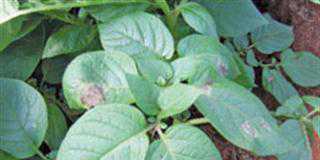
However, incorporated mustard also successfully used for eelworm “trapping” actually decreased these fungi’s populations.
The species of eelworm complicates matters. Different species and varieties of marigolds respond differently to certain species of eelworm.
Tagetes patula, variety Tangerine, will control our four main species of root-knot eelworm – Meloidogyne incognita, M. hapla, M. javanica and M. arenaria, and the root-lesion eelworm Pratylenchus penetrans.
In fact, it can be effective against 14 genera of plant parasitic nematodes, but isn’t effective against spiral nematodes and a few others. I believe T. patula will control our most prevalent species, in many cases as effectively as soil fumigation.
Fumigation kills plant-parasitic as well as predatory nematode species. As plant-parasitic species re-colonise the soil faster than the beneficial species do, marigolds are a better proposition than fumigation over the long term.
This was verified in Canada, where P. penetrans is a huge problem in flue-cured tobacco. In this case, a single crop of marigolds was rated equal or better than fumigation, while the results persisted for two or more years. Results were reported in the Agronomy Journal.
The eelworm was M. incognita and the numbers refer to juveniles present at each period.
In another study, after nine weeks, lesion nematodes were reduced by 99% with T. patula, whereas fallow land resulted in a 43% reduction and wheat, a suitable host plant, increased the population by 260%.
Marigolds should be planted at a high density, not more than 15cm apart, and should be grown for about three months before being worked into the soil. A number of commercial weedkillers aren’t effective against Tagetes minuta (khakibos, khaki weed) so can probably be used to control weeds in marigolds, but trials should be done first. Dual and similar products may be suitable.
So where does all this information lead us? It would appear that by planting a marigold crop instead of a cash crop, a farmer would probably lose out economically as the profit from the cash crop might have paid for the nematicide by a fair margin.
If no crop was planted at this time, marigolds would be a good option, as was the case in my trial. My trial wasn‘t done scientifically, but the crop that followed marigolds was visibly better with no eelworm.
In the US and other countries, where many commonly used fumigants are banned, this concept is enjoying renewed interest. Trends indicate that increasing numbers of crop chemicals will be withdrawn in future.
Many major produce buyers are using sophisticated tests to determine the presence of toxic substances in the produce they buy, and relaying the safety of their foods to supermarkets and clients for greater peace of mind, credibility and sales.
This practice can be very useful for organic growers where chemicals aren’t an option.
So there is a potential solution to eelworm problems. Although researchers from many respected institutions have had encouraging results, a great deal more must be learnt before we fully understand all the mechanisms at work. The burden will fall on public institutions, as the private sector doesn’t finance public-interest research investment. The amount of research still being done is very encouraging.
Thanks to Alistair Thompson from the ARC who sourced a number of useful abstracts for me.











